DAY 5 (31st August 2024)
Kazakhstan (Altyn Emel National Park)
The Altyn Emel National Park is a UNESCO biosphere reserve covering over 300,000 hectares in size, located between the Ili River and the mountains of Dzhungarian Alatau. It has two major entrances, i.e. from the north via Basshiy and from the west near Besshatyr. Unfortunately, if you enter from one side of the park, you cannot reach to the other entrance. The west entrance would bring you to its famous cultural sites where you can explore the ancient stones containing petroglyphs and Saka burial mounds.
We decided to visit the park via Basshiy, and after obtaining our permits from the Park Rangers Office, we headed out from our new accommodation place. After the unpleasant event of the night before, moving to another place turned out to be a great idea. There were several must-go places, namely the Aktau Mountains, Katutau Mountains, the 700-Year Willow Tree and the absolute must – The Singing Dunes. We detoured to the Stella Oshaktas on our way out.
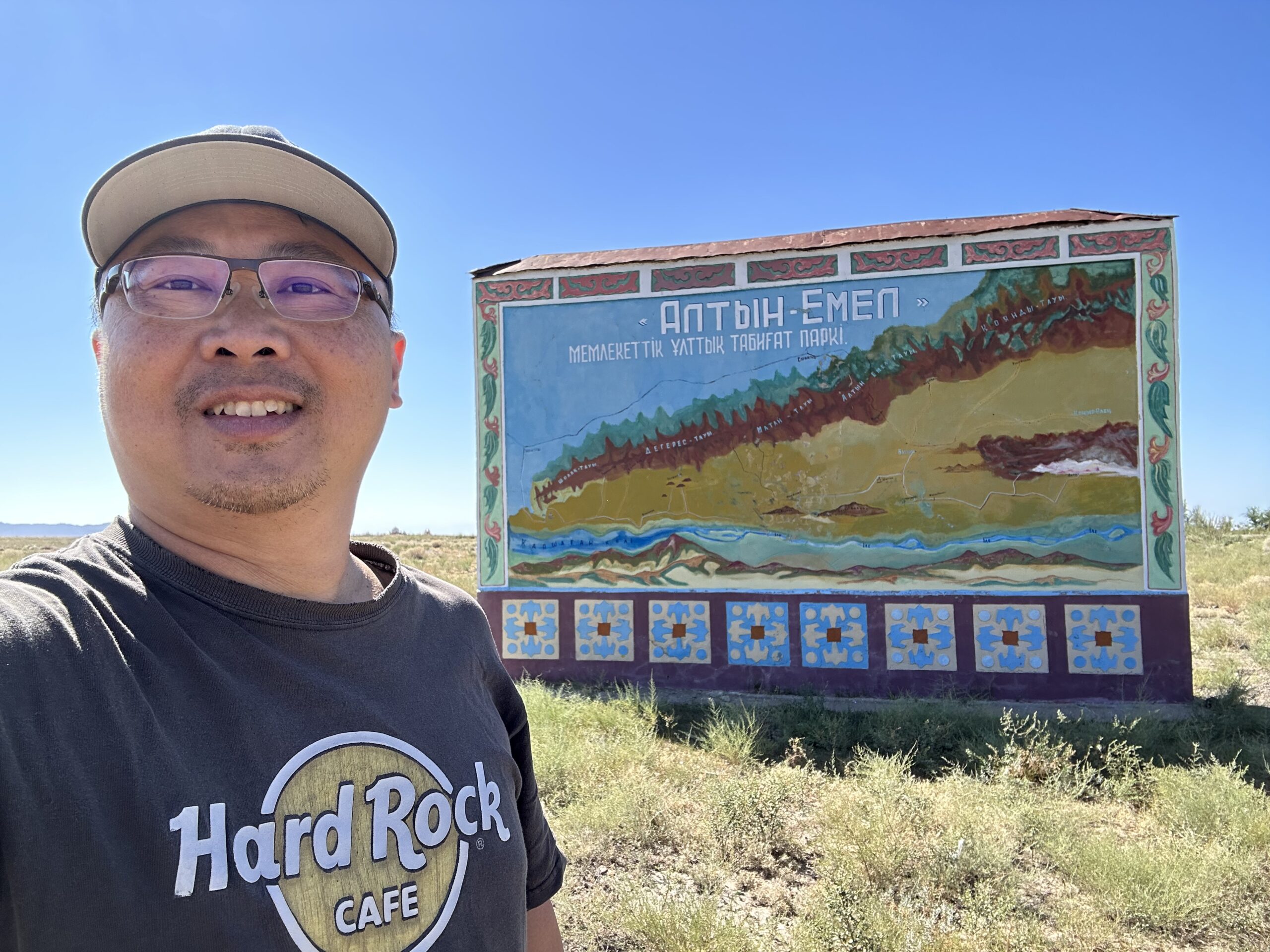
By distance, these places are not far from Basshiy or even from one spot to the other, but the bumpy, uneven dirt track made travelling slow and potentially dangerous if we weren’t careful. We packed our lunch with us, as we knew we would be out the whole day, and there was no time to turn back. We were on our way by 9:30am and the sun was blazing hot overhead, but every stop we made along the way was something new.
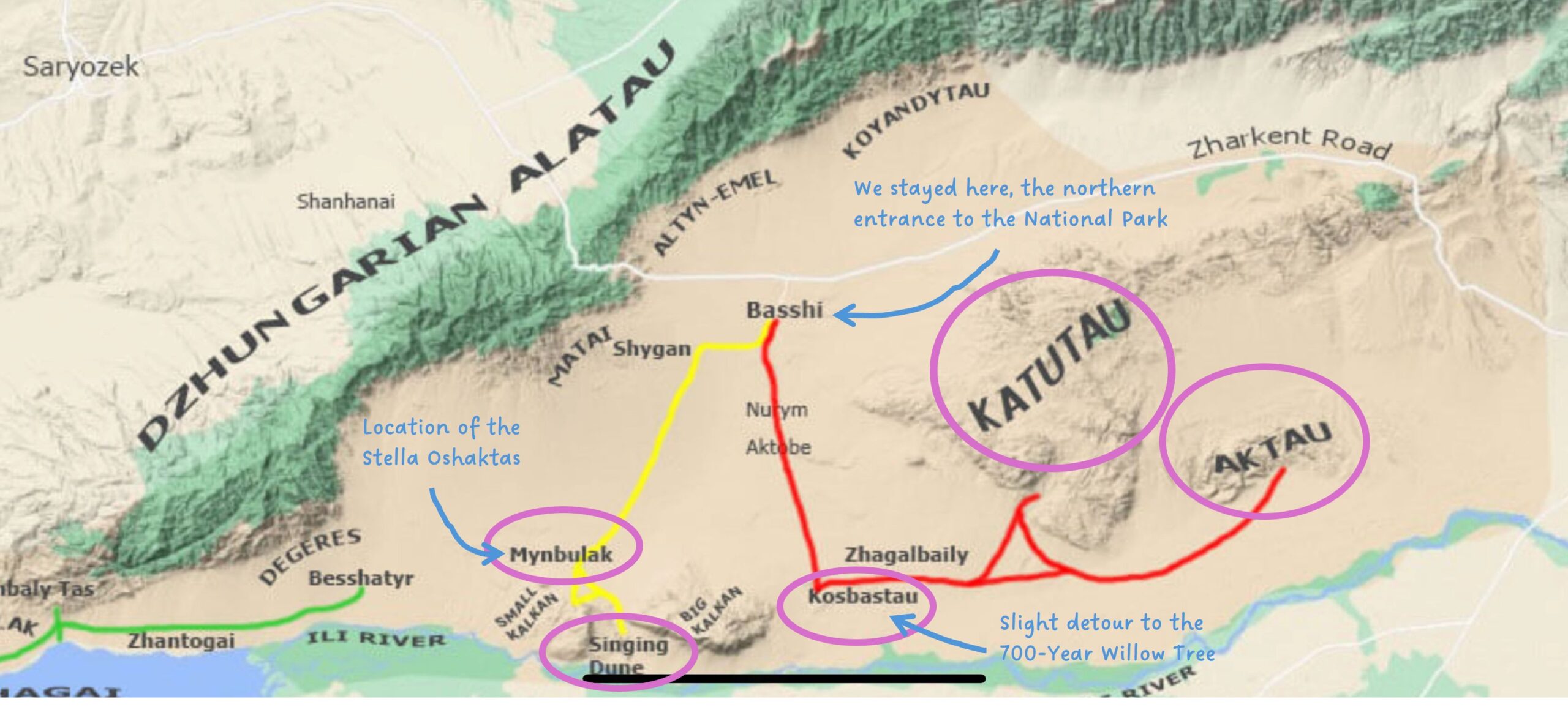
Aktau Mountains
We decided to tackle the furthest place from Basshiy first, which is the Aktau Mountains or White Mountains, so called because of the hills and mountains in the area are predominantly chalky white in colour. However, historically, this area was once under a huge ancient lake or as some studies suggested, the “lake” was actually Tethys Ocean. Sedimentation of various rocks and minerals over the centuries give this place its unique feature – their multi-coloured layers. The elevation of the Aktau Mountains rose over time, and centuries of erosion forces exposed these layers for us to enjoy.
After an almost two-hour drive (we stopped at various distances from the mountains), we came to the end of the road. It is possible to hike up the dry riverbed which had carved out the canyons, but we didn’t have the time. We were content to just soak in the beautiful sceneries and enjoy the beautiful mountains for what it is. Wifey and I decided to walk to the foothills of one of the chalky white hills, and laid our hands on it! Well, we can now say, that we have done that.
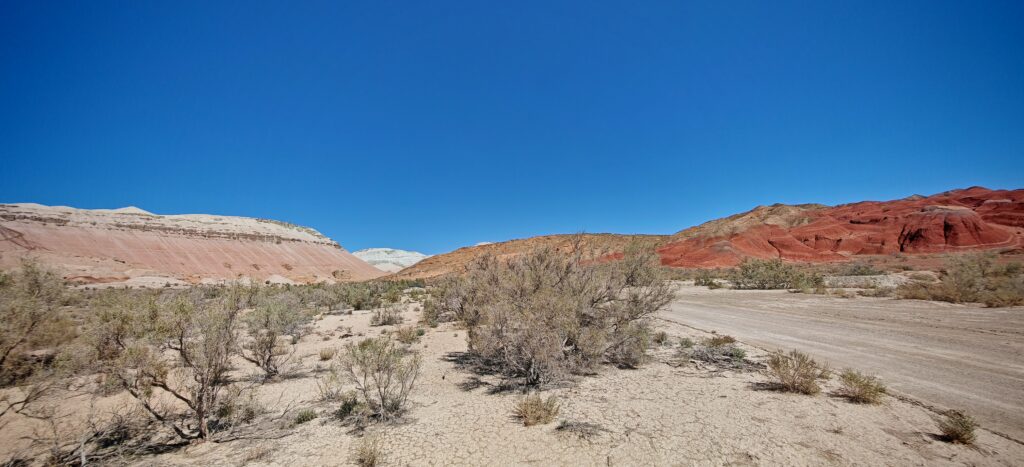
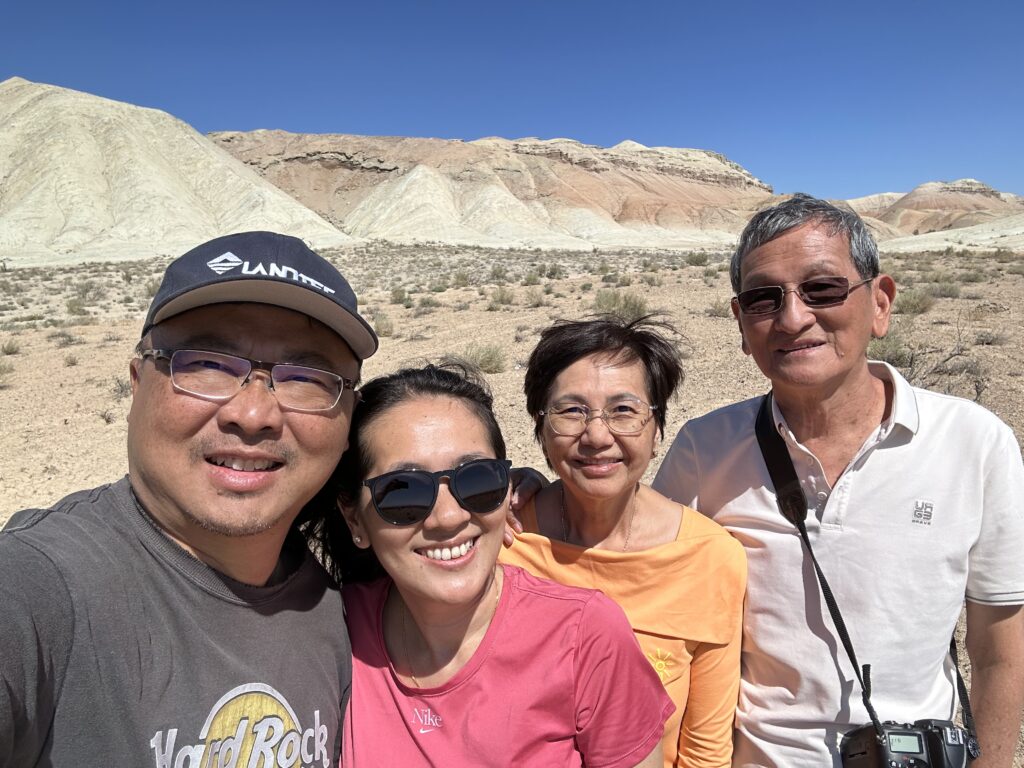
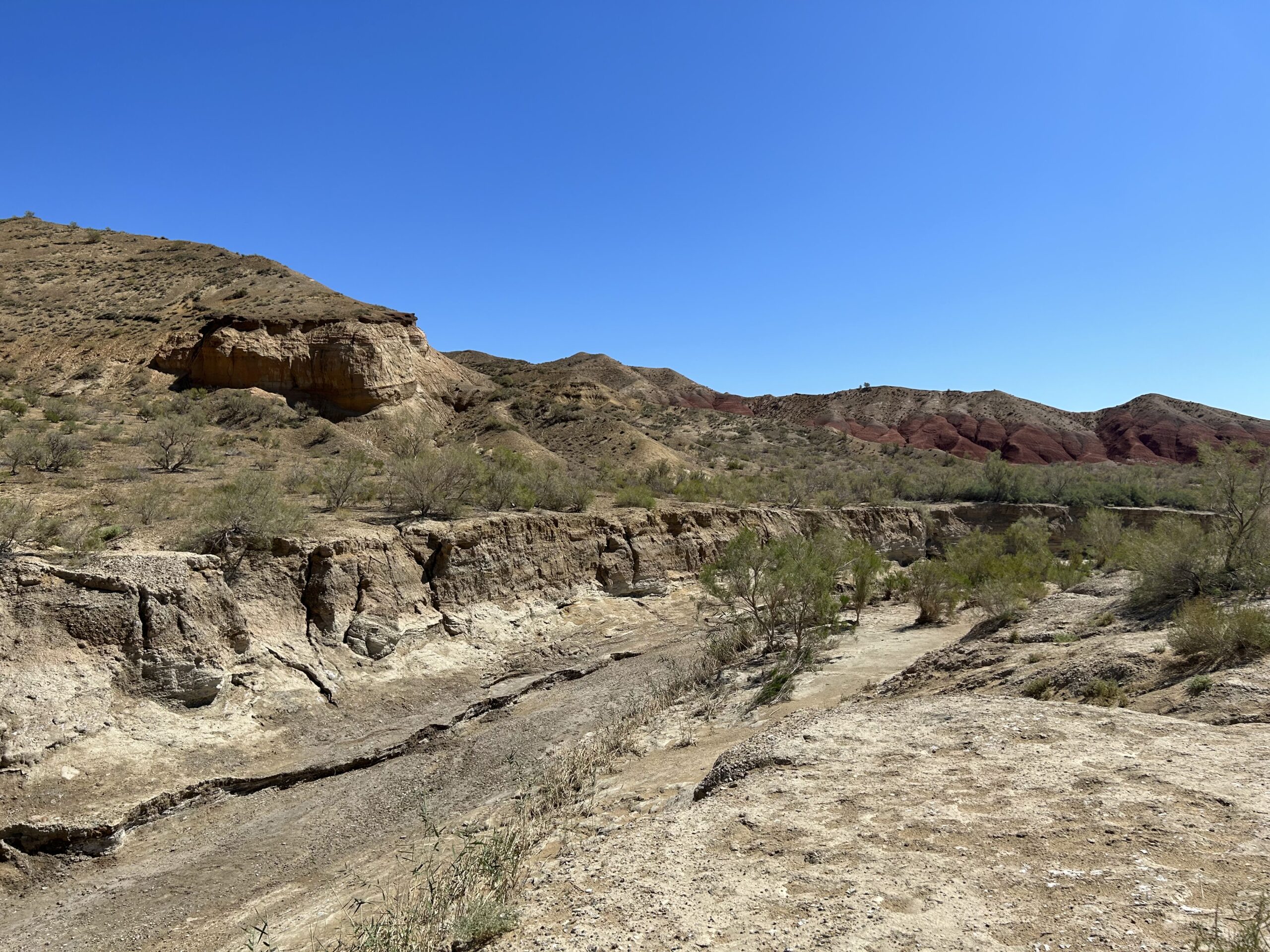
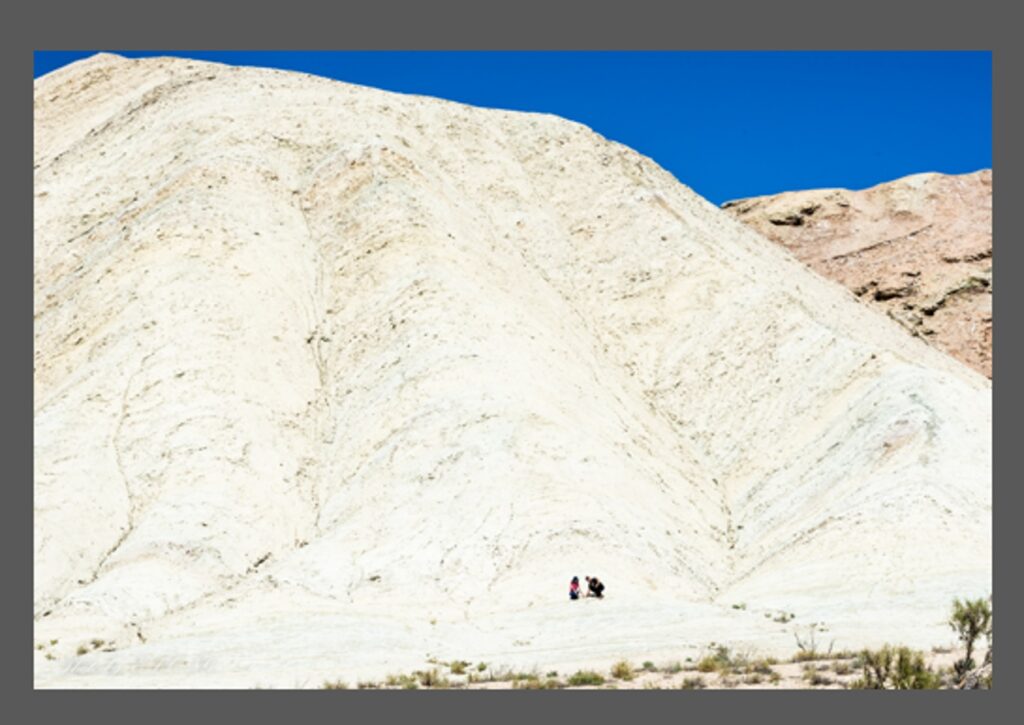
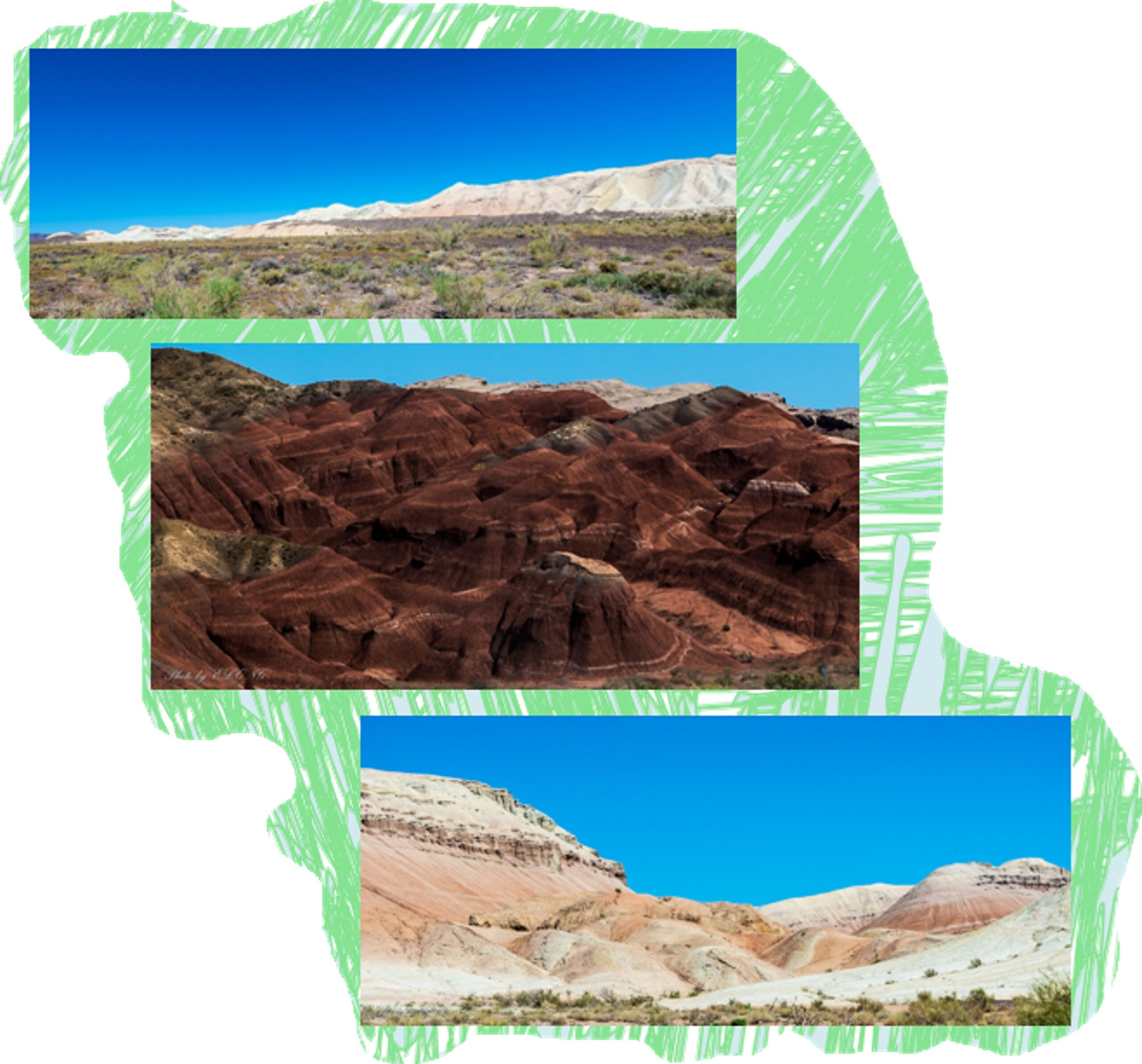
The Katutau Mountains
The Katutau Mountains, which is over 40km from east to west and 25km from north to south, was a relatively short drive in the direction of Basshiy. There is a signpost along the dirt track which would point you in the right direction towards the Katutau. In contrast to the Aktau, the Katutau was formed during the highly intense volcanic period of the region’s history. The molten lava that once flowed through this area had created rocks of various bizarre shapes and sizes, evidence that nature at its fury is indeed a frightening beast to behold!
Katutau means “frozen” or “severe”, giving you the sense that everything here is frozen in time, caused by the severe punishment the molten lava had subjected the local geology to. And the result is this beautiful alien landscape, full of rocks shaped by the combination of molten lava and local rocks.
Where the road ends, the Katutau Mountains are still some ways away, but this area is strewn with these alien rocks of all shapes and sizes. The most famous one is right at the designated car park area. Surprisingly though, this area is not given the attention it deserves, and even when we spent almost an hour there, we didn’t encounter any other visitors, as opposed to the many we met at Aktau.
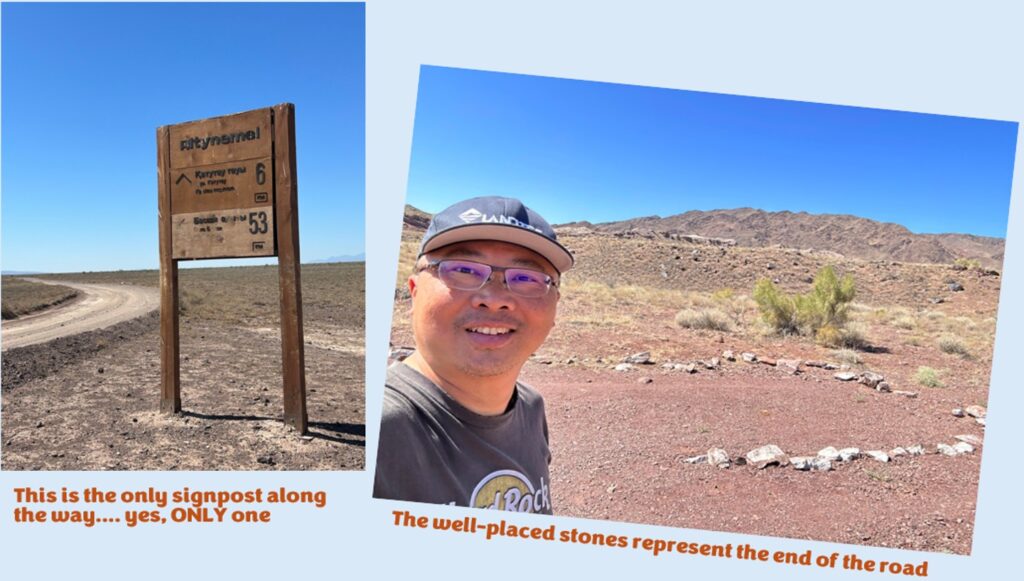
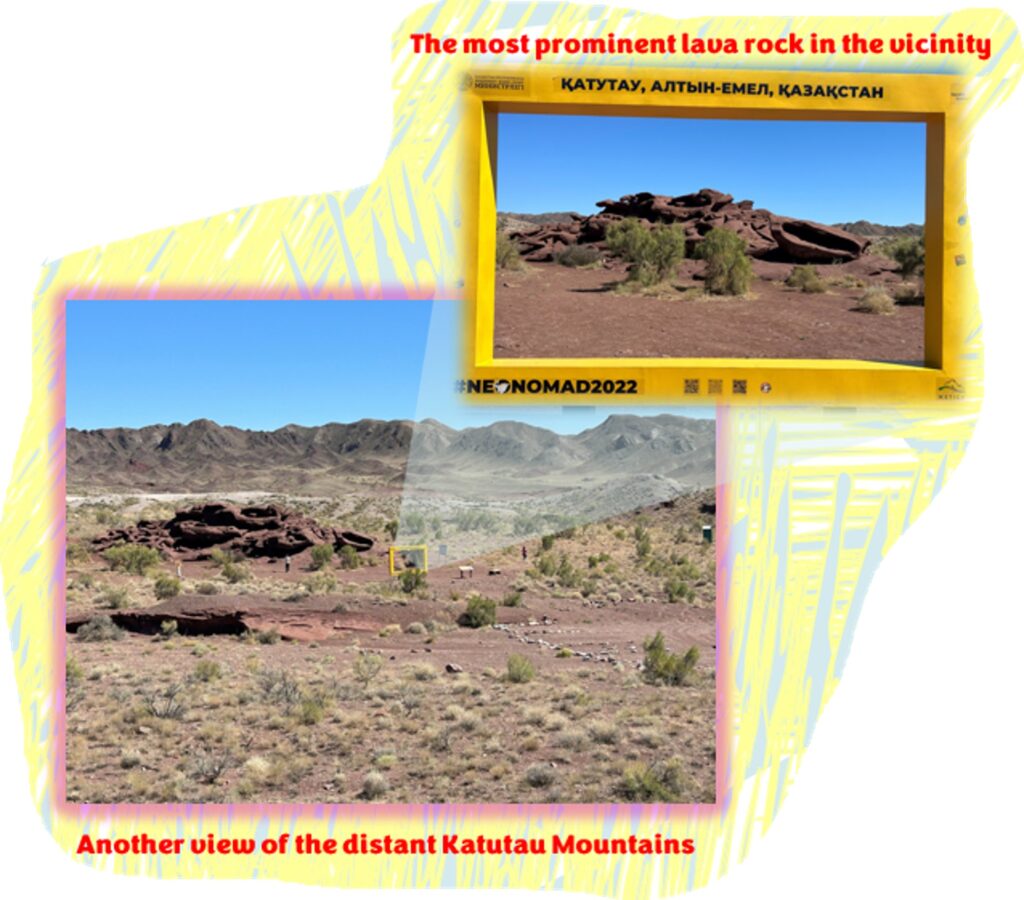
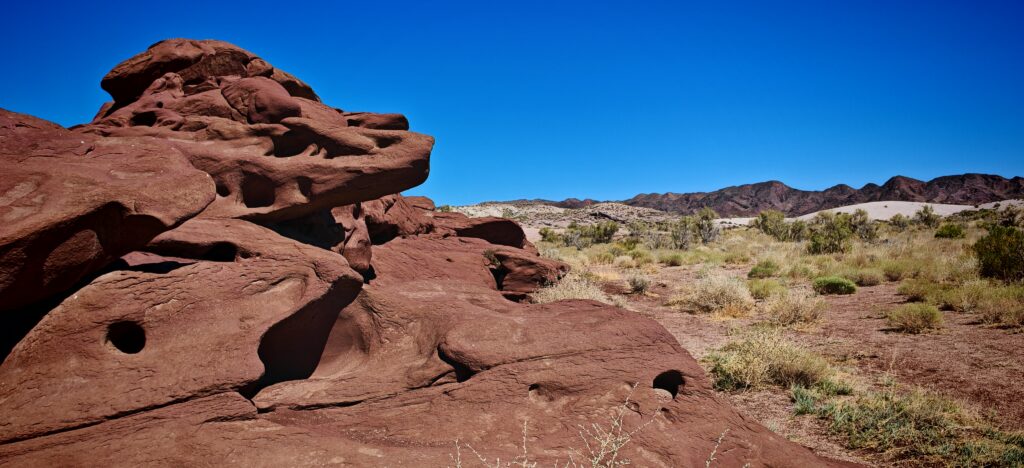
Kosbastau – The 700-Year Old Willow Tree
There is a ranger’s station in Kosbastau, where a freshwater spring was discovered years ago. This water serves the small community there, including the tens of rangers throughout time that once served in this park and their family members – and of course, the occasional tourists. This ancient spring then allowed for the growth of various trees in this otherwise hostile, arid desert-like landscape. Among the trees that have grown here include a willow tree said to be over 700 years old, hence the apt name given to the tree – The 700-Year Old Willow.
Legend has it that even the great Genghis Khan once stood underneath this tree in the heat of the day during his conquests in Central Asia, though no one could prove that. The tree is considered sacred by the residents in the area, and they do all they can to preserve and protect it. With a girth of over 15m and standing over 20m in height, this special tree really dominates the immediate area. Some of its branches are so thick and far reaching that human-made support had to be rendered to prevent the tree from toppling over.
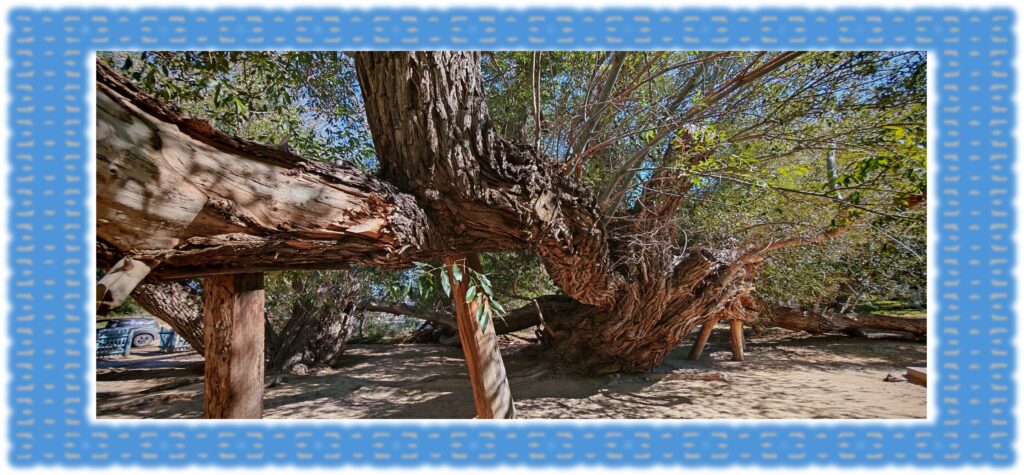
The Singing Dunes
The Singing Dunes is so-called because when the coarse sands of the dune rub against each other when moved, either naturally or by human action, there is a humming sound that is produced. Although the surrounding region is dry and arid, they can hardly be called a desert in all sense of the word, and so the appearance of a sand dune akin to one that you could find in a ‘proper’ desert is quite a surprise. However, scientists have since deduced that the formation of the nearby Big Kalkan and Small Kalkan mountains probably cause a funneling of the winds, which then formed this single sand dune up from an almost barren area.
According to local folklore, no matter how the wind blows, or how it is disturbed by human activity, the shape of the dunes has maintained the same since man first caught sight of it. In fact, the Singing Dunes were said to have been the first witnesses of Genghis Khan’s hoards rushing through this region in the 13th century.
Located along a stretch of the Ili River, the Singing Dunes is just 3km long and about 150m high, and is one of the most popular places in the Altyn Emel National Park. The drive there from Katutau was a hard drive as we retraced our steps almost all the way to Basshiy, and then took a separate route. There were many cars and tourist vans there, and from far, the dunes did look daunting.
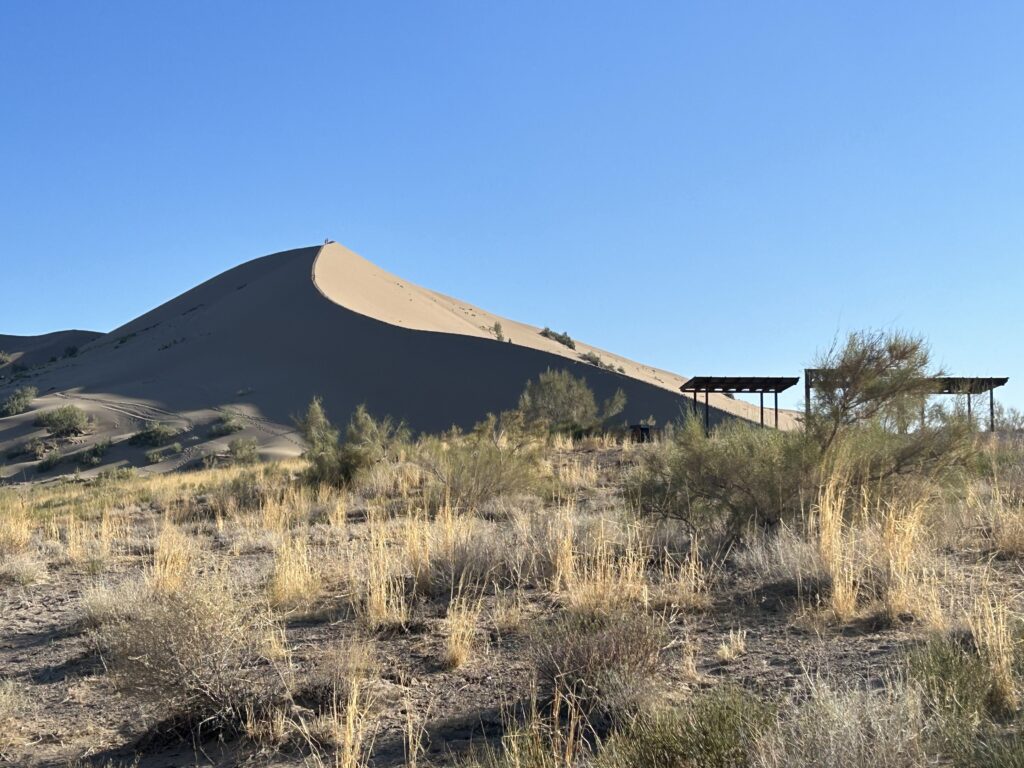
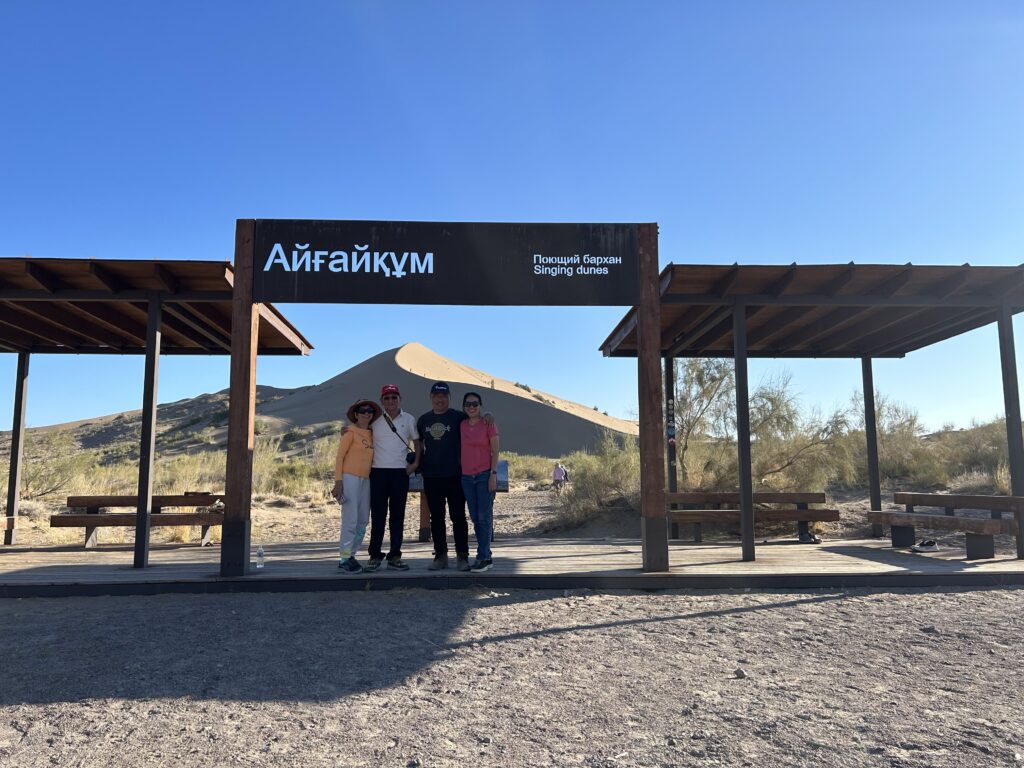
It took quite some cajoling to get MIL to join us on the route up as she was afraid that there would be a misstep and she would fall off, but we assured her that the sands were soft and there was almost no chance of anyone rolling down the dunes. She finally relented and joined us on the trek up. I am pretty sure she was glad she winged it this time!
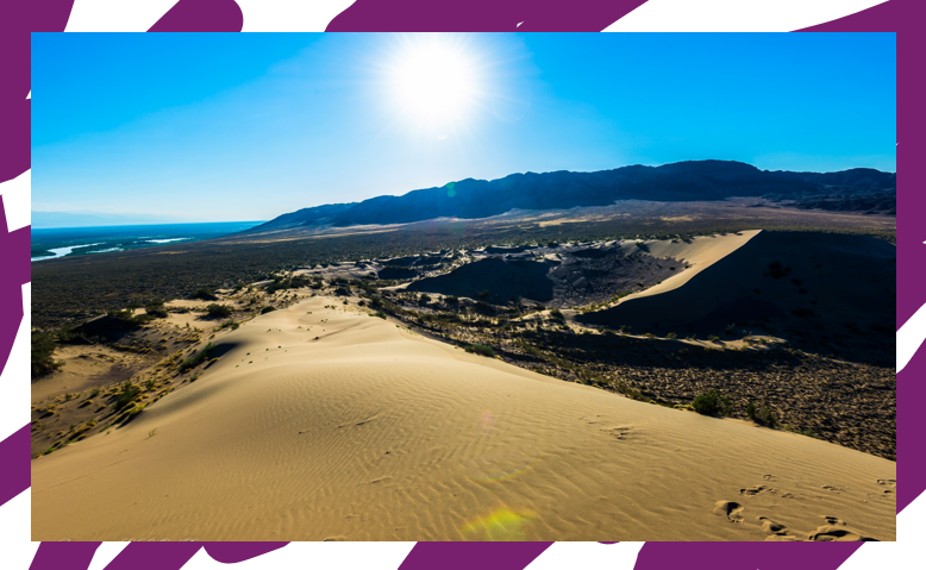
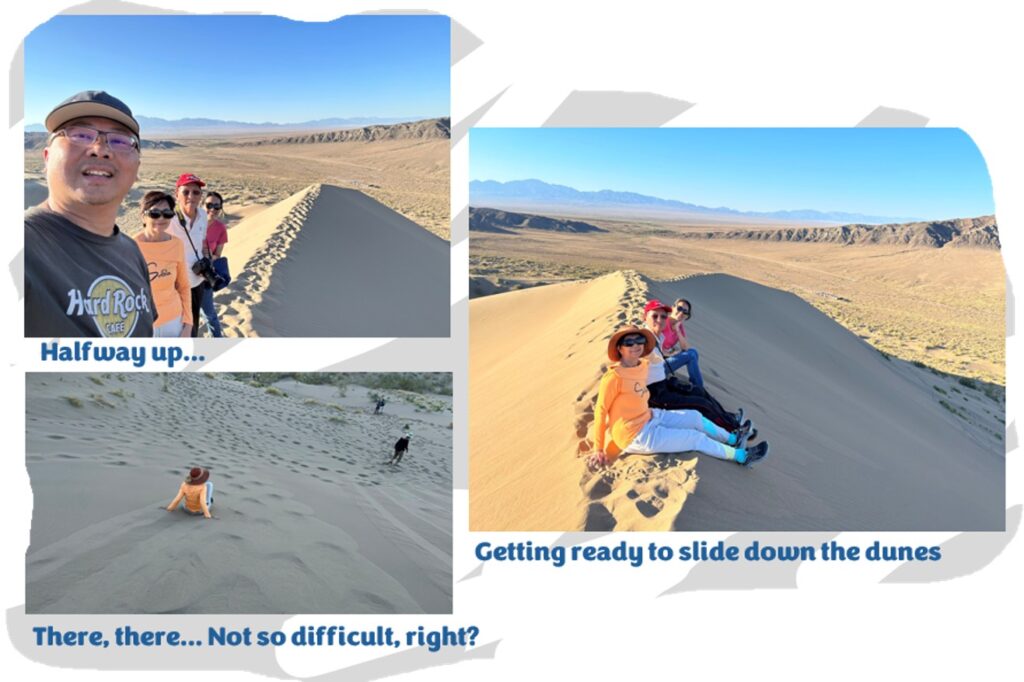
During the slide down the dunes, if we moved a little faster, the rubbing of the sand would emit an audible low humming sound which reverberated throughout the area (Bro Ray: To me, the low tone of the sound actually made it sound quite sad, but that’s just me). When more people do it simultaneously, the sound was quite loud, actually. We took our time to slide down the dune, and I could say that when we reach the bottom, whatever fear MIL had was completely gone!
We were ‘warmly’ greeted by some of the wild creatures of the desert at the bottom of the slope. I’m pretty sure there is an abundance of wildlife here. Anyway, we chatted excitedly on our way back to the car, and the fading daylight was a sign that it was time to leave.
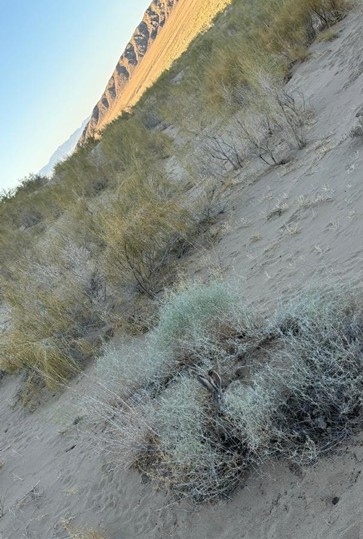
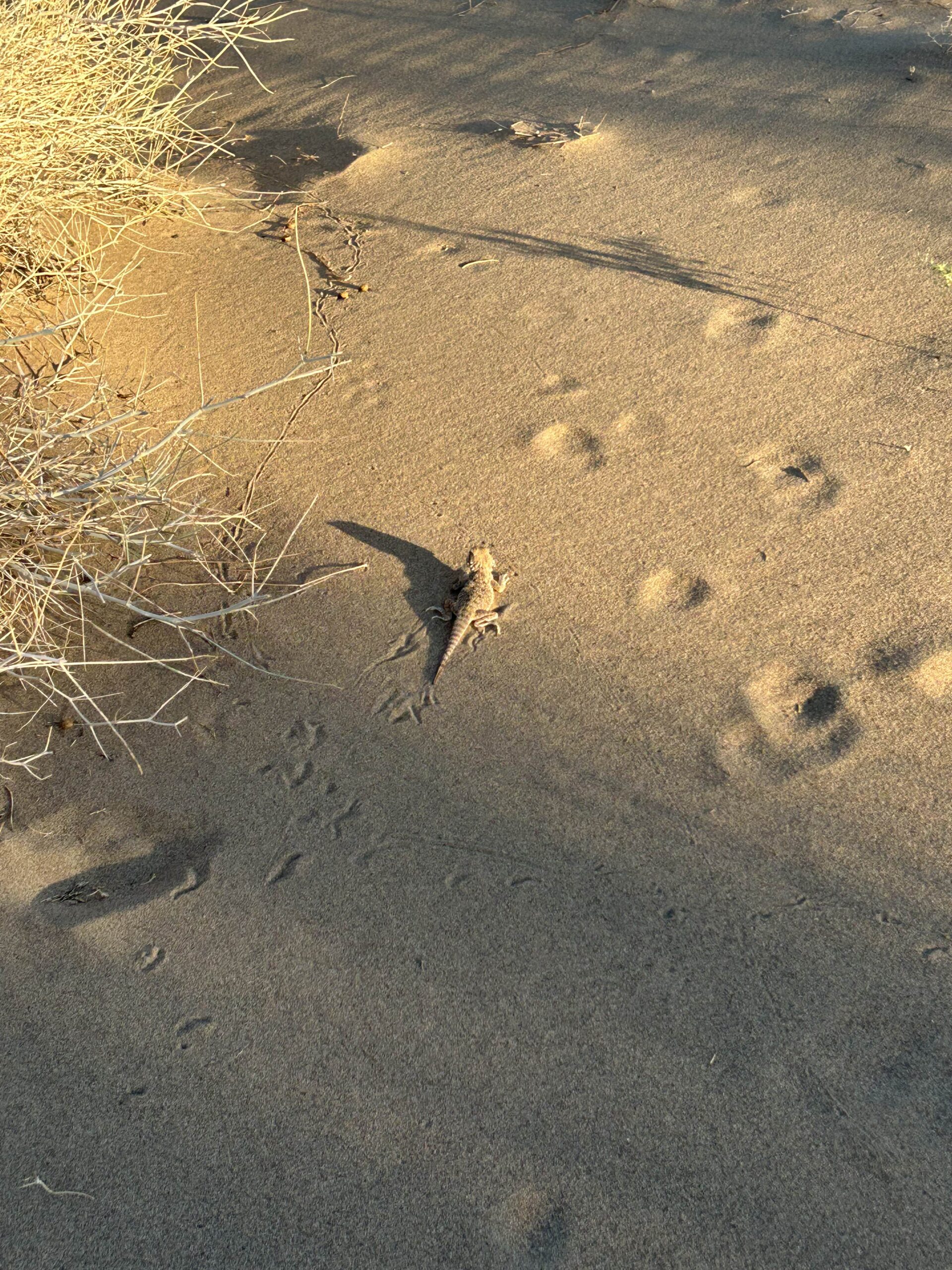
Stella Oshaktas
On the way in, I had noticed a small off-shoot road going into the hills, and there looked to be something of interest as there were several cars there. Told myself, that after we had seen the Singing Dunes, we will try to get there if the time permits. I recalled that there was something in the maps which pointed to this place. With the sun setting and the closing of the park in mind, we rushed to this place.
“Oshak” means fireplace and “tas” means stone in the Kazakh language. Here, several stones were erected, alleged by (again) Genghis Khan’s soldiers for the purpose of cooking a meal for the hordes that followed the great Mongolian leader. The more likely theory is that these are the eastern boundary stones demarcating the territory held by the 1st century Saka tribe, since there were similar ones like these in other areas known commonly to be the Saka tribe’s ancestral boundaries.
Regardless of the folklore or the traditions, seeing such big stones being erected without the modern equipment we take for granted is still amazing, and that some of them are still standing today, is a testament to the ingenuity of the ancient peoples.
We managed to catch the last of the sun, and then it was a mad rush to get to the gate before 7:00pm.
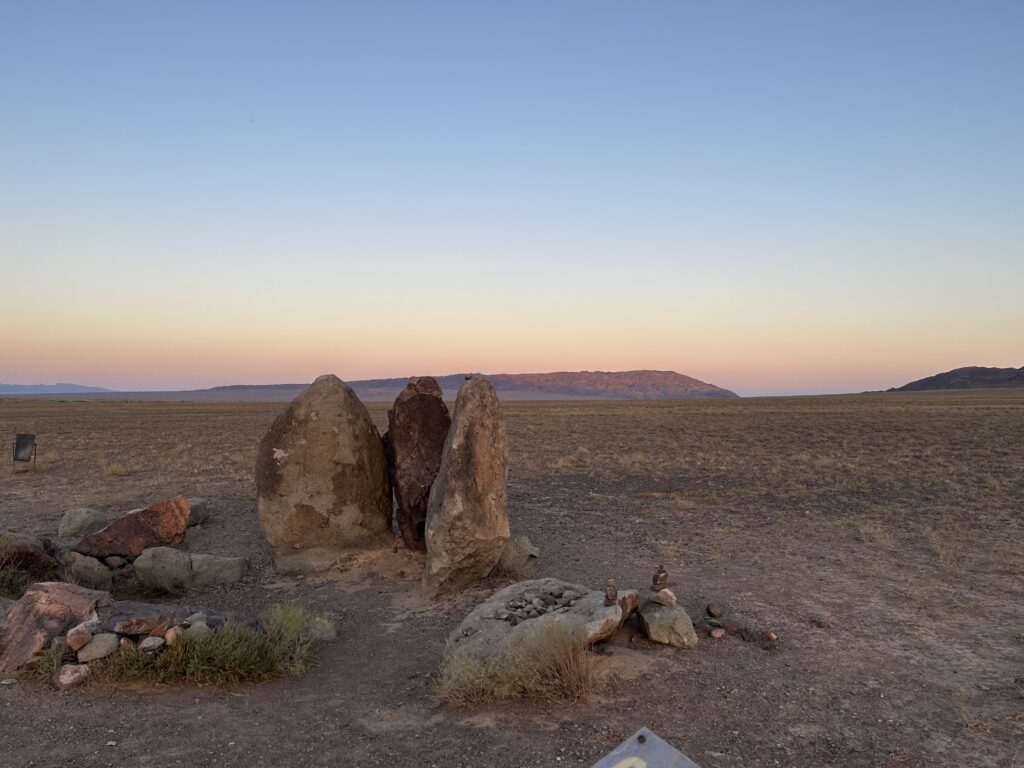
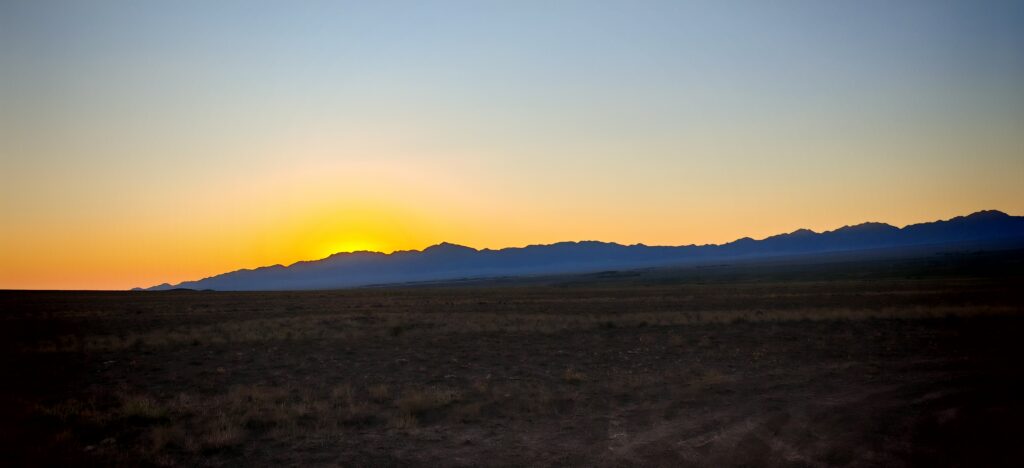
Summary for Day 5
We reached the last gate at 7:06p.m. and we were relieved that the guardpost was stilled manned, and we were let through without much fuss. We got back to the house, our new accommodations, and were greeted by some glorious Kazakh food. Our new landlady was such a delight, and both she and her sister really went all out to welcome us into her simple but spacious home. There was a Kazakh family (with two young boys), and a travelling band of various nationalities (one of them from Lithuania and a Russian lass, among them) also staying the night.
As we took our dinner, we had some light-hearted banter amongst ourselves as we got to know each other better. We spoke in English, although sometimes we’d have to stop to clarify in our own mother tongues, but that’s to be expected. We said our goodnights, and went about cleaning up and getting ready for the next day.
The adventures for the day really made up for the delays caused by the car problem. All the places we visited is actually worth spending a full day at, for hiking, discovering and adventuring. But, we have other plans ahead, and the adventure continues….



